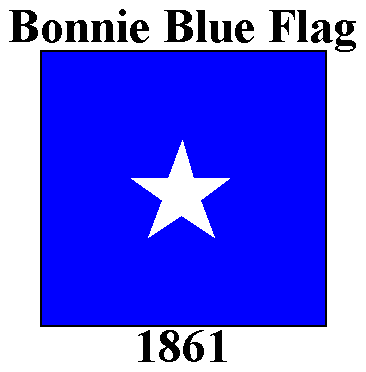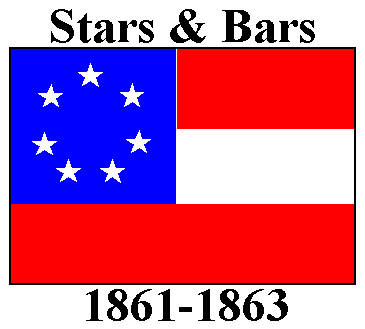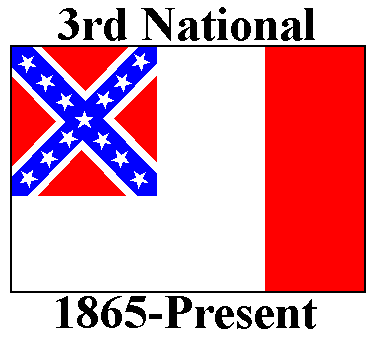 |
38th
Regiment Virginia Volunteer Infantry
|
 |
 |
38th
Regiment Virginia Volunteer Infantry
|
 |
![]()
Virginia's Secession from the Union
Last Updated: 05/01/2000
| The election of Lincoln in 1860 provoked South Carolina to secede from the Union.
on Dec. 20, 1860. Six states in the deep South followed and on Feb. 4th, 1861 the representatives of those states meet at Montgomery, Alabama and created the Confederate States of America. A provisional government was formed with Jefferson Davis as president.
In Virginia, Governor Letcher summoned the General Assembly to a special session on January 7, 1861. On the 19th of January, the assembly called for the election of delegates to a state convention to discuss the issue of secession. The convention met on February 13th. The majority of the delegates to the convention wished to preserve the Union. Former U.S. president John Tyler chaired a peace conference in Washington D.C., that sought to resolve the sectional crisis. The failure of that conference combined with the generally unfavorable reaction the Lincoln's inaugural address on March 4th, 1861, weakened the opponents of secession in the Virginia convention. Still on April 4th, 1861, the convention defeated a motion to recommend secession to the voters by 85 to 45. Things changed with the April 12th firing on Fort Sumter and Lincoln's April 15th call for 75,000 volunteers to put down the rebellion. The convention met again on April 17th and voted 88 to 55 to secede. It then submitted the Ordinance of Secession to the voters for ratification. Voters ratified the Ordinance of Secession and Virginia seceded from the Union on May 23rd. |
![]()
Flags and Symbols of the
Southern Confederacy
Last Updated: 05/10/2001
| When the Southern States seceded from the union in 1860 and 1861 they believed that they were acting in a legal and acceptable manner. The Constitution of 1787 had been drafted by delegates from the various independent States and had been voluntarily ratified. No State had been forced to join the union and any State which did not wish to join the union could go its own way. Logically, it followed that any State could also voluntarily leave the union when its people believed that the union was no longer serving its purpose of establishing justice and/or insuring domestic tranquility. |
| Flags are symbols. National flags represent the history, make-up, and purpose of a country and it's people. Revolutionary movements yield a wide variety of flags, yet the Southern independence movement was a conservative revolution in that forms of government remained intact in the States and the new federal government was almost a carbon copy of that from which it had separated. As a result the first national flag of the Confederate States was adopted sooner and promulgated in a more uniform manner than is usual with flags associated with other revolutions. |
Source: The Flags of the Confederacy by Devereaux D. Cannon, Jr.
 |
The
Great Seal of the Confederacy The Great Seal of the Confederacy has a picture of George Washington in its center. The South considered it's struggle for Southern independence to be the same as the American Revolution. Washington, a Virginian and a Southerner, was chosen as it's model. The Confederate Motto "Deo Vindice" is on bottom half of the seal. It translates from the Latin to "With God has our Defender." |
 |
The Bonnie
Blue Flag When Mississippi adpoted an Ordinance of Secession on January 9, 1861 a large blue flag bearing a single star was raised over the capitol building in Jackson. A witness to event, an Irish-born actor Harry Macarthy, was so inspired by the event that he wrote a song entitled "The Bonny Blue Flag". This song was destined to become the second most popular patriotic song in the Confederacy. |
 |
The
Stars & Bars Flag For the first Ttwenty-four days of its existance the Confederate States of America had no officially approved flag. When Jefferson Davis was inaugurated President on February 18,1861 in Montgomery, Alabama it was the State flag of Alabama that flew over the capitol building. The Stars and Bars were adopted on March 4, 1861 |
 |
The Stainless
Banner or Second National Flag May 1, 1863 to March 4,
1865 The Second National Flag or the Stainless Banner or the Stonewall Jackson Flag (pick your name) was adopted on May 1, 1863. The reference to the "Stainless Banner" comes from its pure white field which proclaimed of the purity of the Cause it represented. One of its first uses was a drape for the coffin of General Thomas "Stonewall" Jackson on May 12, 1863. The very first "Stainless Banner" is now on display in the Museum of the Confederacy in Richmond, Virginia. The flag was used until the end of the War. |
 |
The Third National Flag of the
Confedercy Marah 4, 1865 to April 9, 1865 |
| © 1997, 38th Regiment Virginia Volumteer Infantry | Last Edited: 06/12/97 09:02:33 PM |